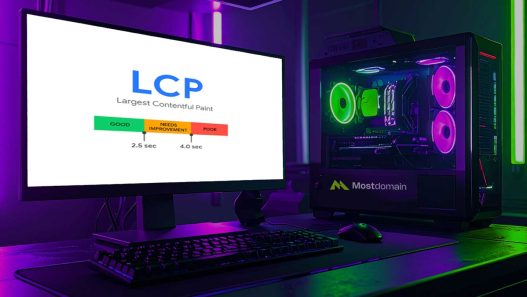ChatGPT Prompts for Web Development: Boost Your Code & Design – ChatGPT prompts for web development are changing how developers write code and build websites today. Think of them as smart shortcuts that help you get things done faster.
Instead of spending hours searching for solutions online, you can simply ask ChatGPT the right question and get working code in seconds. These prompts help you write code, fix bugs, and design better websites without the usual headaches.
Learning to use ChatGPT prompts for web development is easier than you think. You just need to know what you want and ask clear questions. Whether you’re fixing a broken button, making your site look good on phones, or speeding up your website, the right prompt can save you hours of work. As these AI tools get better, they’re becoming must-have helpers for anyone building websites.
Why Prompts Make Web Development Easier
Prompts are simple questions or instructions you give to ChatGPT to get specific answers. When you use ChatGPT prompts for web development, being clear and specific helps you get better code faster.
For example, instead of googling for hours to learn how to build a dropdown menu, you can ask, “Make me a dropdown menu that works on phones and is easy for everyone to use.” You’ll get working code in seconds.
| What You Can Do | Example Task | Time You Save |
| Write Code | Build website parts | 60-80% |
| Fix Problems | Find and fix errors | 40-60% |
| Get Ideas | Design layouts | 50-70% |
| Make It Faster | Speed up your site | 30-50% |
Prompts also help you learn new things quickly. Questions like “Show me how Flexbox works with a simple example” give you answers right away and help you understand better.
You can even ask for creative help like “What colors should I use for a tech company website?” or “Help me plan a portfolio website layout.” This mix of technical and creative ChatGPT prompts for web development helps you build better websites faster.
How to Write Better Prompts
The trick to getting good results from ChatGPT prompts for web development is adding enough details. Instead of saying “Make a login form,” try saying “Make a login form in React that checks passwords, shows error messages, and works on phones.”
When you’re specific like this, ChatGPT gives you exactly what you need, and you won’t have to fix much afterward.
Tips for Writing Great Prompts:
✓ Tell it what tools you’re using (like React, Vue, or Angular).
✓ Say if it needs to work on phones and tablets.
✓ Mention if speed matters.
✓ Add any security needs like password checks
Another smart way to use ChatGPT prompts for web development is to ask follow-up questions. Start broad, like “How do I add user login to my website?” Then get more specific: “Show me the code for OAuth login in Node.js.”
This step-by-step approach helps you get better answers that actually work in real projects.
Getting Creative with ChatGPT
One of the coolest things about ChatGPT prompts for web development is how they help you try new ideas quickly. Normal coding can be slow and boring, but with prompts, you can test wild ideas fast.
For example, asking “Create a simple, animated homepage inspired by modern art” can give you fresh design ideas you might never think of on your own. It’s like having a creative partner who’s always ready to help.
Making your prompts personal to your project makes everything work better. Many developers use ChatGPT prompts for web development to create starting code, fix annoying bugs, or brainstorm new features before they start building.
The secret is treating prompts like a conversation, not just commands. This way of thinking changes how you work and helps you get more creative with your coding.
Real Examples You Can Try:
✓ “Find what’s wrong with this JavaScript code that’s slowing down my site”
✓ “Make this CSS work better on mobile phones”
✓ “Give me ideas to improve how this API works”
✓ “Write tests for this React component”
✗ Asking vague things like “Fix my code”
✗ Not telling it what technology you’re using
✗ Giving incomplete information and expecting magic
Making AI Work for You
Using ChatGPT prompts for web development changes the way you build websites. Instead of doing everything alone, you have an AI helper that makes you faster and more creative.
This teamwork between you and AI leads to smarter solutions and better websites. As AI gets better, knowing how to use prompts well will become a basic skill for all web developers.
It’s not just about working faster. It’s about trying new things and learning more. When you ask clear questions and have real conversations with ChatGPT, you get better answers that actually help.
This makes ChatGPT prompts for web development a tool you can’t work without when building modern, user-friendly websites.
Start Using ChatGPT Today
ChatGPT prompts for web development are changing the game for developers everywhere. They help you write code faster, solve problems easier, and come up with creative designs without the usual stress. When you learn to write clear, detailed prompts, you can get working code in minutes instead of hours.
This new way of working with AI makes building websites more fun and less frustrating. As these tools keep getting better, developers who know how to use ChatGPT prompts for web development will build cooler projects faster than ever before. The best part? Anyone can start using them today, no matter their skill level.
Begin with easy prompts and make them harder as you learn what works. Keep track of which prompts give you the best results for your projects.
References
- OpenAI Documentation, ChatGPT Best Practices for Developers
- Mozilla Developer Network, Web Development Standards and Guidelines
- Google Web Fundamentals, Modern Web Development Techniques
- Stack Overflow Developer Survey, AI Tools in Software Development
- W3C Web Accessibility Initiative, Accessible Web Design Principles



















